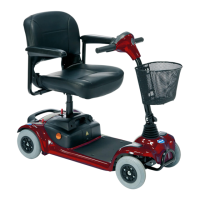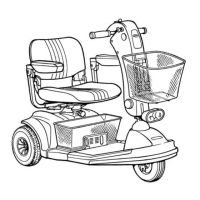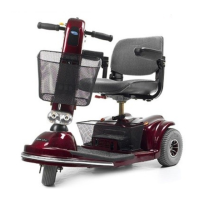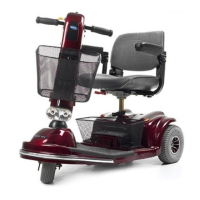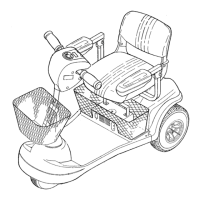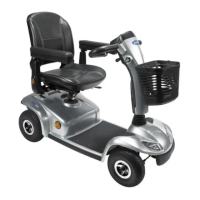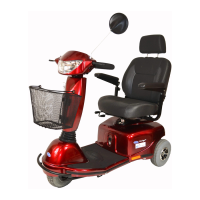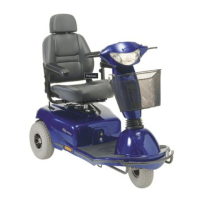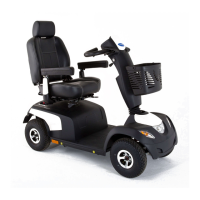Why Invacare Lynx L-3X batteries draw excessive current when charging?
- GGregory StevensonSep 8, 2025
If your Invacare Scooter batteries draw excessive current when charging, it may indicate battery failure, so replace the batteries.
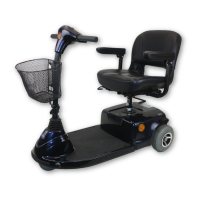
Why Invacare Lynx L-3X batteries draw excessive current when charging?
If your Invacare Scooter batteries draw excessive current when charging, it may indicate battery failure, so replace the batteries.
What to do for Invacare Lynx L-3X Scooter low battery voltage?
Recharge the batteries of your Invacare Scooter before using it.
| Maximum Speed | 5 mph |
|---|---|
| Ground Clearance | 2.4" |
| Turning Radius | 43" |
| Top Speed | 5 mph |
| Seat Width | 18 inches |
| Battery Type | Sealed Lead Acid |
| Overall Width | 23 inches |
| Weight Capacity | 300 lbs |
| Controller | Dynamic |
| Overall Length | 42 inches |
Provides essential safety instructions, warnings about accessories, and general notices for safe operation.
Covers setup warnings, transport safety, and tie-down restraints for the powered scooter.
Details safety instructions for electrical connections, grounding, and battery handling, including warnings.
Provides detailed specifications for overall dimensions, seat dimensions, and arm dimensions of the Lynx L-3X Scooter.
Outlines routine inspection procedures for the powered scooter, including professional servicing every six months.
Identifies and describes the components of the control panel, including speed control, battery display, and key.
Provides instructions and warnings for operating the scooter, emphasizing secure hardware and safe turning practices.
Explains how to engage and disengage the brake release lever for driving or pushing the scooter.
Covers essential safety warnings and cautions for working with batteries, including short circuits and acid neutralization.
Explains the correct procedure for connecting and disconnecting battery cables, emphasizing terminal configuration and safety.
Details the procedure for charging the batteries, including safety warnings, charging indicators, and timing.
Outlines suggested maintenance procedures, including checking bolts, battery maintenance, tire checks, and cleaning.
Provides a table of common symptoms, probable causes, and solutions for issues like limited driving distance and charging problems.
Lists service indicator flash codes, their descriptions, and meanings for diagnosing scooter problems.

